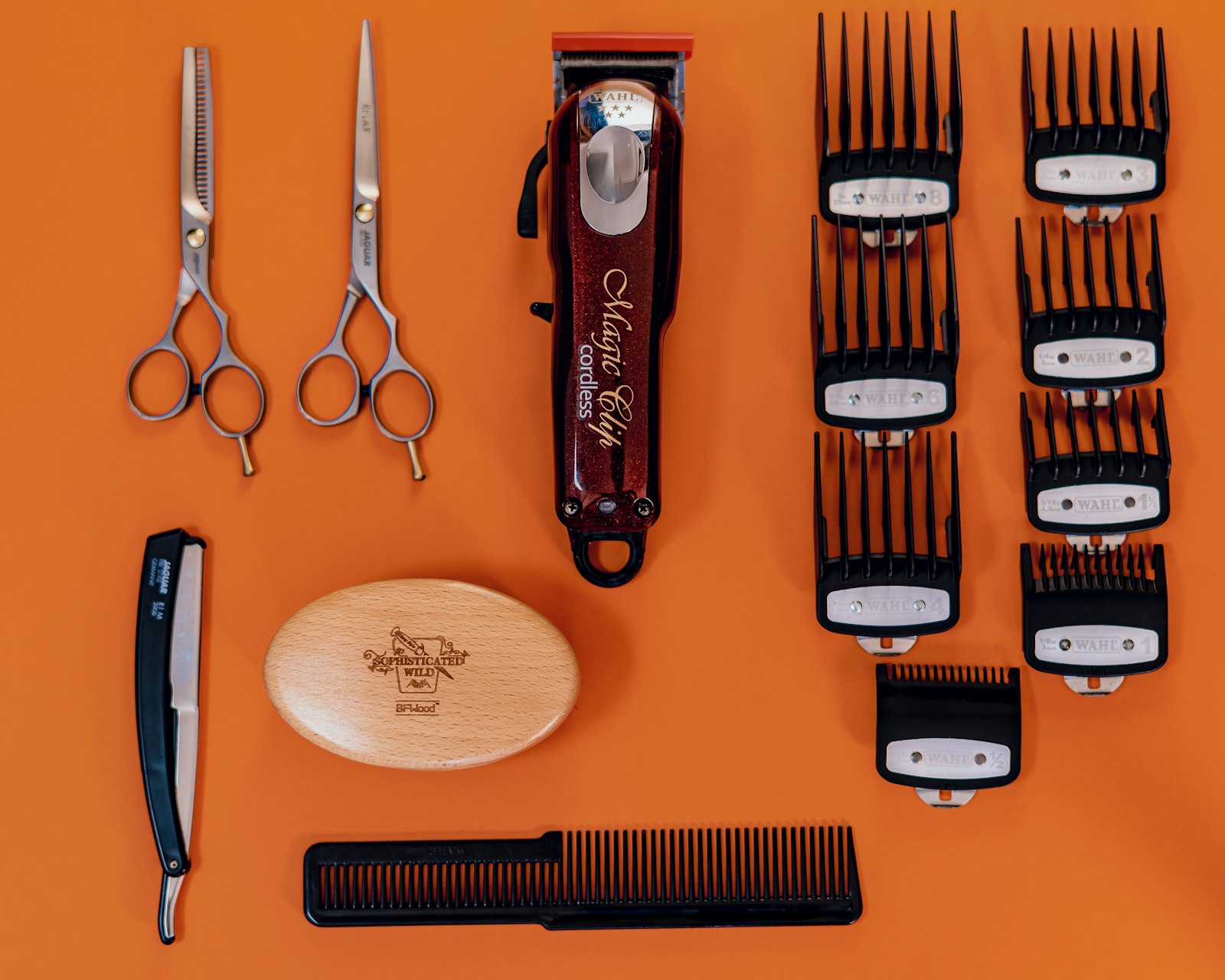Barber Shear Size & Fit Guide
Pick the right blade length and handle fit for your hand size, cutting style, and Australian client mix.
Source baseline: ScissorPedia internal brand archive and JapanShears distributor data — Cross-check manufacturer specification sheets before publishing.

One Size Never Fits All
Blade length dictates technique control, and handle fit affects stamina. Use this guide to size shears accurately so you avoid RSI, protect edges, and deliver consistent results across every chair.
We combine measurement standards from technical knowledge with persona insights and climate considerations to keep your kit dialled in.
Quick Answer: What Size Barber Scissors Should I Use?
Measure from the base of your thumb to the last knuckle of your middle finger. That length equals your ideal blade. Most Australian barbers land between 5.5" and 7" depending on technique focus.
Hand Measurement Steps
- Place ruler along palm from thumb base crease to last middle finger knuckle.
- Match measurement to blade chart below.
- Ensure finger ring fits snug with inserts; pinky should rest comfortably on tang.
- Test open/close motion—only thumb should move.
Blade Length by Technique
| Blade Length | Primary Techniques | Persona Fit | Australian Considerations |
|---|---|---|---|
| 4.5" - 5.25" | Detailing, fringe, beard work | Apprentice, Influencer content detail | Great for humid climates where tight control prevents frizz. |
| 5.5" - 6" | General cutting, layering | Apprentice starter, Business standardisation | Balanced for mixed-texture cities like Melbourne and Sydney. |
| 6" - 6.5" | All-round pro work, slide cutting | Modern Influencer, Traditional craftsman | Handles coarse coastal hair while keeping precision on fine hair clients. |
| 6.5" - 7.5" | Scissor-over-comb, bulk removal | Traditional, Business (fade specialists) | Essential for high fade demand in QLD and WA; pair with crane handles for long sessions. |
| 7.5"+ | Creative cutting, special effects | Niche artists, runway teams | Requires VG10+ steel for edge stability; ensure glove-friendly handles for cold VIC winters. |
Handle Fit Audit
- Classic handles: Suits traditionalists but raises shoulders—limit to short sessions.
- Offset: Drops elbow ~30%, ideal for everyday use; add inserts for secure fit.
- Crane: Maximises ergonomic relief for long fades; pair with 6.5"+ blades.
- Swivel: Best for vertical cutting and mobile crews—reduces wrist torque by ~50%.
RSI Prevention Checklist
- Rotate blade lengths across the day to vary hand posture.
- Log discomfort triggers in maintenance SOP; adjust handles accordingly.
- Oil pivots nightly to maintain smooth action and reduce strain.
- Swap inserts seasonally as humidity affects finger swelling.
Persona Recommendations
- Traditional Craftsman: 7" bevel + 5.5" detail set; invests in German steel for long-term reliability.
- Modern Influencer: 6" convex + 5" micro-tip; chooses lightweight cobalt or VG10.
- Business Professional: Standardises 6" semi-convex for staff training and ROI tracking.
- Apprentice: 5.5" entry convex with mentor-approved finger inserts for grip.
ROI Snapshot
Proper sizing drops service time and sharpening costs:
- Upsize to 6.75" for fades → saves ~3 minutes per fade = +1 booking/day per chair.
- Ergonomic handle upgrade ($420) vs potential RSI physio ($800+) and lost Saturdays.
- Standardised sizes reduce training curve for apprentices by 30%.
Next Steps
- Measure every team member’s hand and record in staff profiles.
- Audit each station for technique coverage (detail, general, bulk).
- Update budget planner with required replacements or upgrades.
- Book fittings with suppliers to test new handles before purchasing.